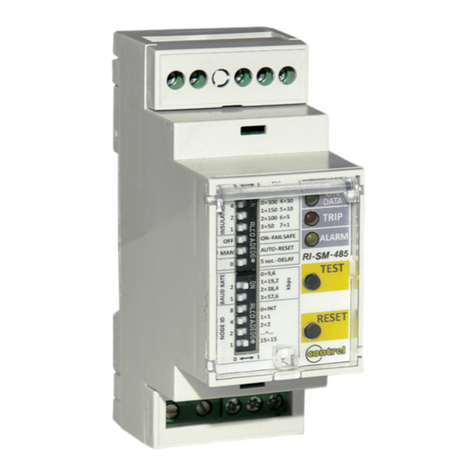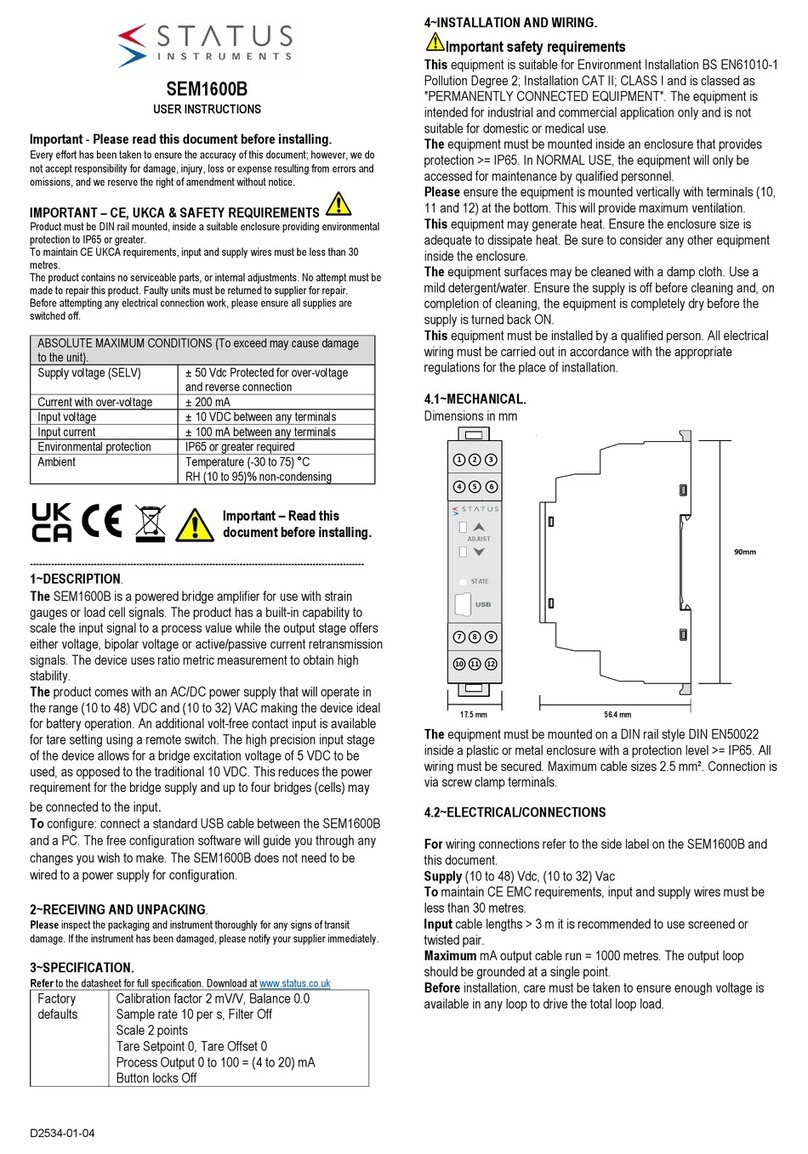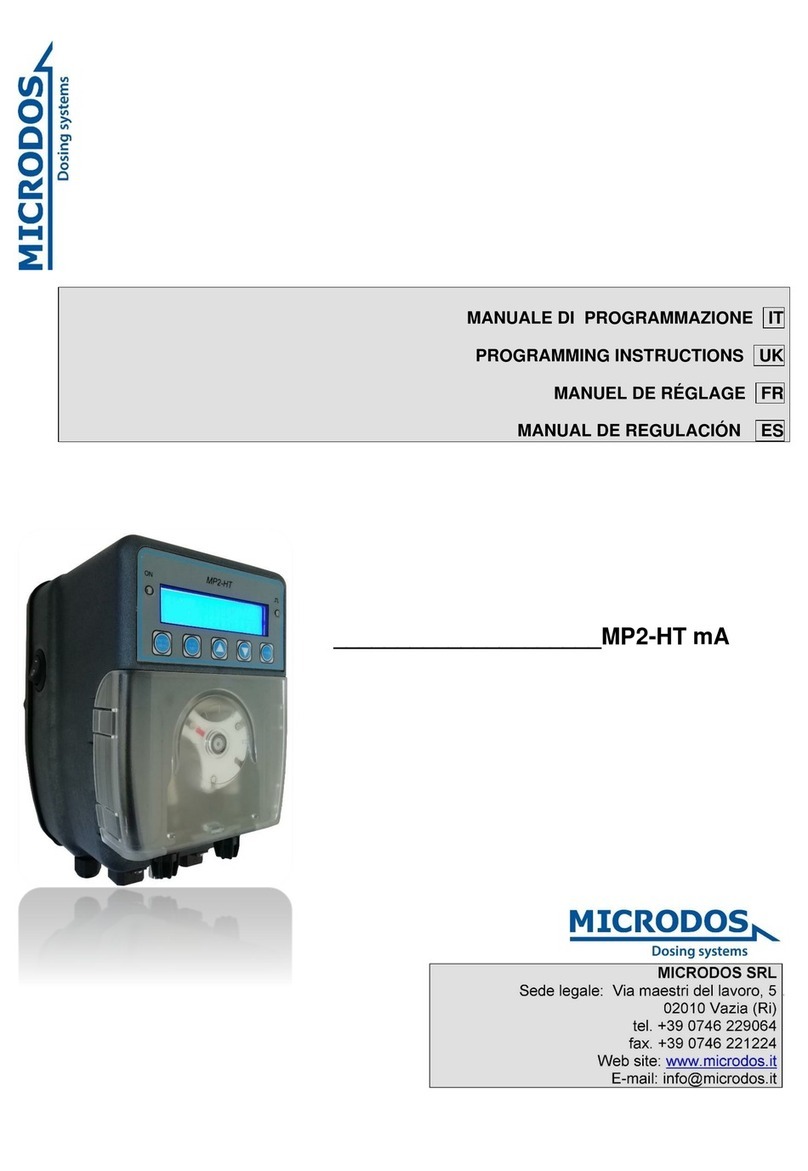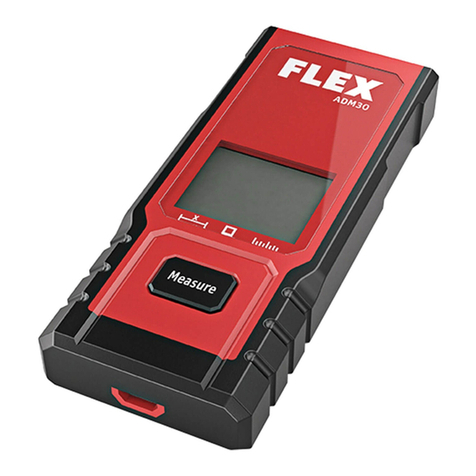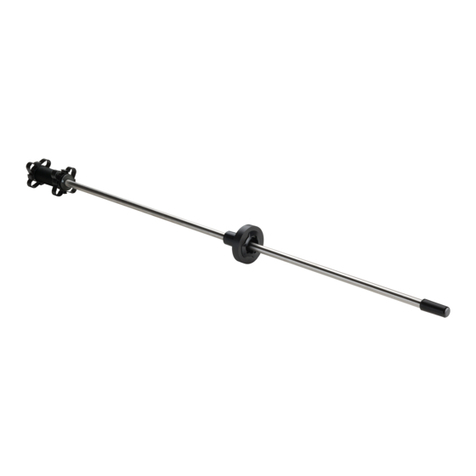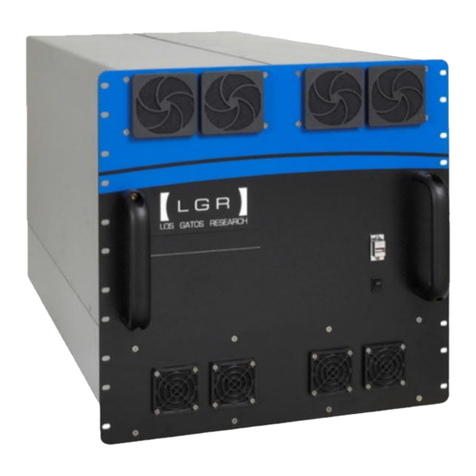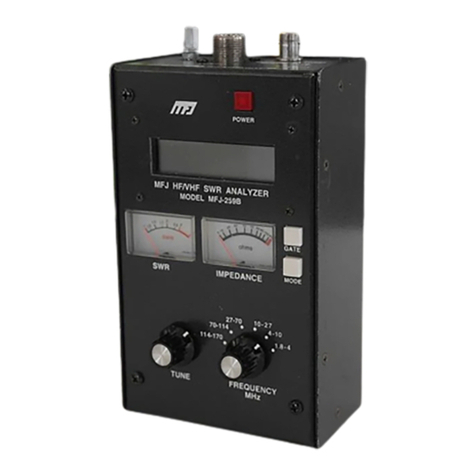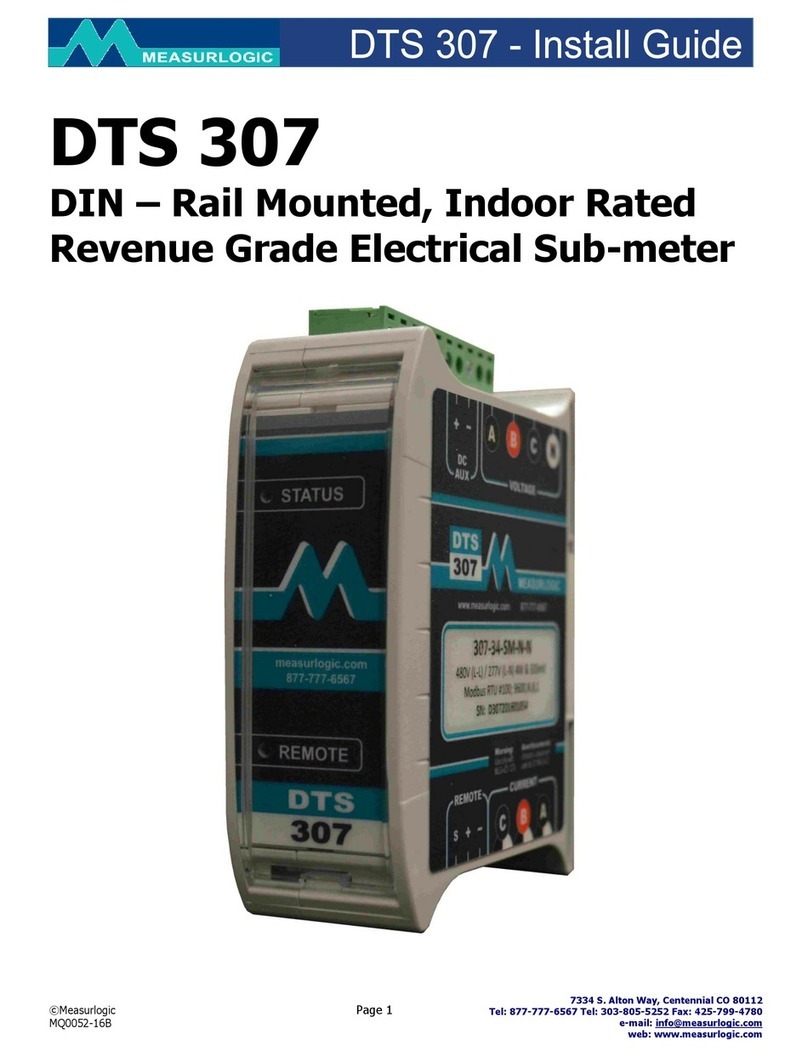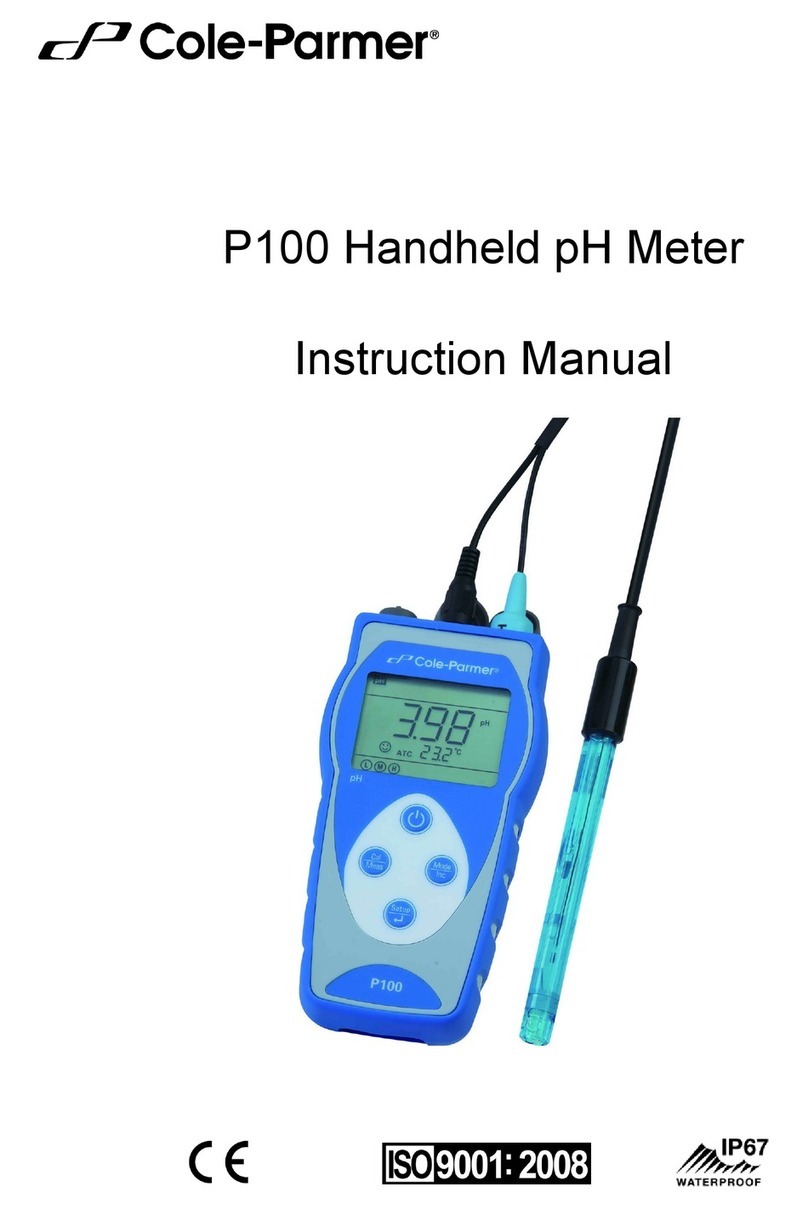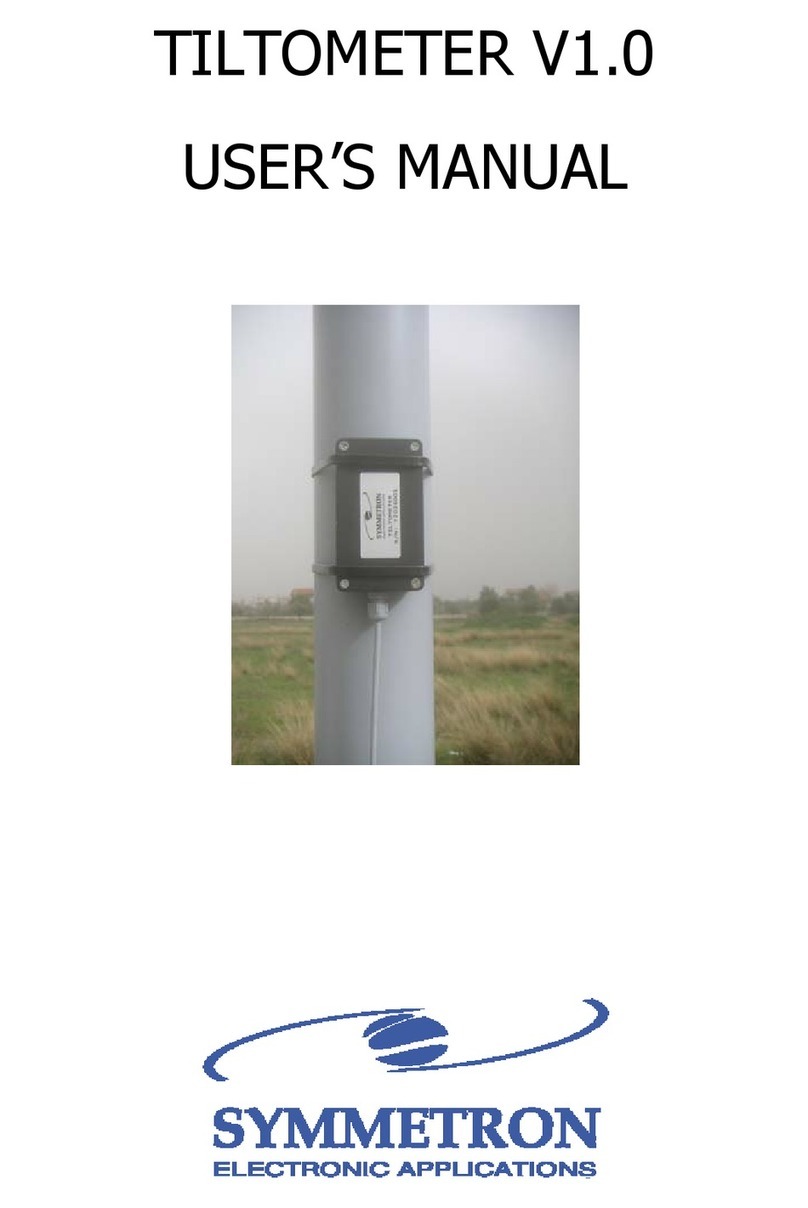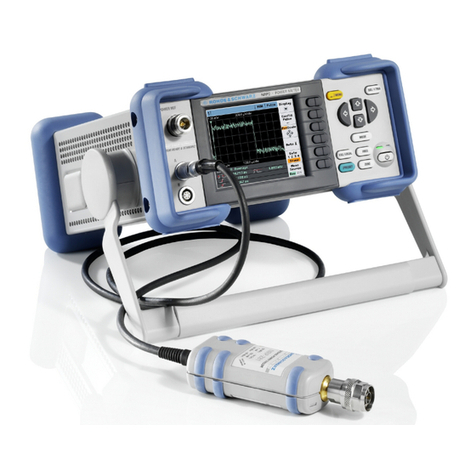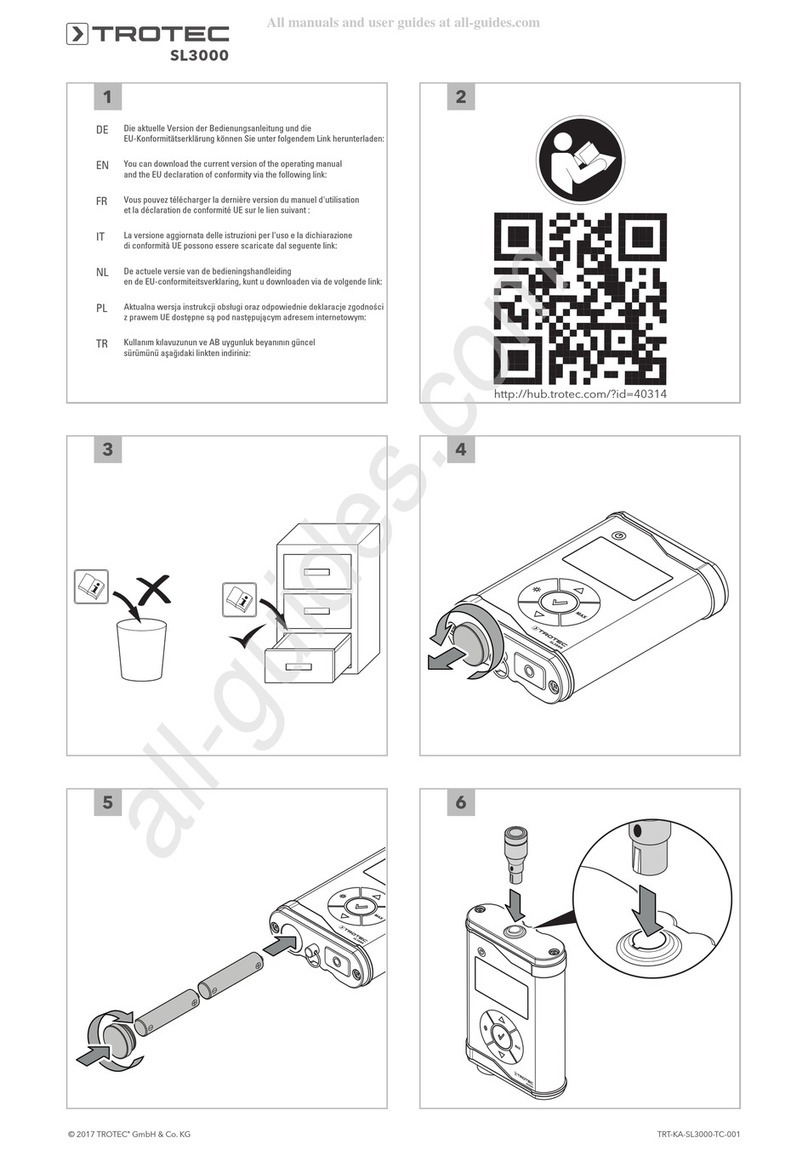SE Devices Z-Wave Series User manual

Page 1
SE Devices - FMS01
Modular
Z-Wave
Devices
Installation Manual

SE Devices –Modular Z-Wave Devices –Installation Manual
Page 2
Introduction
The SE Devices Modular Z-Wave Devices is a series of components which can be combined to cover
several different installation scenarios. Installing a unit consist of combining a Front Unit and Back
Unit in a wall mountable frame. The Front Unit provides the User Interface and Z-Wave
communication, and the Back Unit provides the Electrical functionality (like Relay or Dimmer). The
Devices also support connecting a Room Temperature sensor, to use the device as a Thermostat.
Most of the back units also have an NTC temperature input terminal which can be used for Floor
Temperature thermostat control.
DISCLAIMER and WARNING
The SE Devices Modular Z-Wave Devices are powered from Mains voltage (230V), and MUST ONLY
be installed by authorized electricians. Mains Voltage is very dangerous and can cause serious injury
or death if mishandled. If the devices are not correctly installed, the devices can in the worst case
pose a fire hazard.
SE Devices can NOT be held responsible for injuries or accidents resulting from incorrect installation
and configuration, or installations performed by unauthorized installers.
The SE Devices units provide a Floor Max temperature setting. This is a safety feature used for
protecting wooden floors from overheating, as excessive floor heat can cause wooden floors to warp
and eventually crack. ALWAYS use a Floor Temperature sensor in installations controlling floor
heating for wooden floors, and configure the Floor MAX temperature according to the floor
manufacturer recommendation. Due to the fact that the location of a floor sensor may make it
impossible to get representable temperature readings for the entire floor surface, it is highly
recommended to never set the MAX higher than 25 degrees unless it is absolutely necessary. Due to
this same fact, SE Devices can not be held responsible for any damage to heated floors controlled by
the thermostat functionality of the devices, even when configuration and installation is technically
correct. Always hire professionals to install floors and floor heating, to reduce the risk of damage
caused by the heating system.

SE Devices –Modular Z-Wave Devices –Installation Manual
Page 3
Device Components
A functioning Z-Wave device is assembled using at least 4 separate parts:
-Front Units –Provides the Userinterface
-Mounting Frame –Fixes the Front Unit to the wall
-Back Unit –Provides the Electrical interface (dimmer or relay), and power for the Front Unit
-Back Unit Mounting Bracket –Used to mount the Back Unit in a Wall-box
Optionally the following components can be used for additional functionality:
-Room Sensor –Can be fitted to the bottom of a frame, to provide a Room Temperature
sensor for the lower Front Unit.
-Floor Sensor –Can be fitted to all Back Units except the 1-10V dimmer
-Cascade Power Connector –Can be used to power a Front Unit from an adjacent Front Unit,
in stead of from a Back Unit.

SE Devices –Modular Z-Wave Devices –Installation Manual
Page 4
Front Units
There are currently two Front Units available:
FMS-01 –Multifunction Switch Z-Wave
The Multifunction Switch provides four push buttons which can be configured in 1, 2 or 4-way mode.
This allows for controlling up to 4 external Light Zones via the Z-Wave network, In addition to
controlling the Local Back Unit functionality. The Front Cover comes in several variants, indicating
different use-case scenarios. The Multifunction Switch can also be used as a Room or Floor
thermostat, controllable exclusively over Z-Wave.
FWC-01 –Wheel Controller Z-Wave
The Wheel Controller provides a wheel interface backed by four (4) pushbuttons, which can be used
to control Light and Dimming. In addition the wheel can be used to manually operate the built in
Thermostat functionality. In the center of the wheel there is an LCD display, which provides
information about Light and Temperature to the user.

SE Devices –Modular Z-Wave Devices –Installation Manual
Page 5
Assembly and Installation
Before assembling and installing a Modular Z-Wave device, you need the following parts available:
-One or more Front Units (FMS-01, FWC-01)
-A Mounting Frame (1, 2, 3 or 4 slots)
-One or more Back Unit with Wall-Box mounting Bracket
-… or a Cascade Connector to connect to an adjacent unit
Frames available for Installations
There are currently Four (4) different Mounting Frames available from SE Devices. The difference
between the Frames is the number of Front Units (Multifunction Switch and Wheel Controller) which
can be fitted in one frame. Frames are available for fitting 1, 2, 3 and 4 Units in the same frame.
Back Units for Local Control functionality
Each Front Unit can be combined with ONE back unit, where each back-unit type provides a specific
functionality. Back Units also provide Power to the Front unit, and up to 3 Front Units can be
powered from 1 single Back unit (using a Front Unit Cascade connector). Currently the Following
Back Units are available:
-BMD01 –SE Devices –Mosfet Dimmer Back Unit
-BD1-10V01 –SE Devices - 1-10V Dimmer Back Unit
-BR1P01 –SE Devices –1-Pole Relay Back Unit (3000W)
-BR2P01 –SE Devices –2-Pole Relay Back Unit (1500W)
All available Back Units are compatible with the Multifunction Switch Front unit. The Font Unit will
automatically adapt to control the fitted Back Unit device.
Optional Components
Optionally the installation can also include Temperature Sensors and Cascade Power Connectors.
The following components can be used in an installation:
-Room Sensor –Each frame supports ONE Room Sensor, which is mounted at the bottom of
the Frame. The Temperature readings can only be accessed by the lowest Front Unit, which
should be considered when installing more than one Front Unit in one Frame.
-Floor Sensor –All but one Back Unit supports an NTC temperature sensor to be connected
via the Connection Terminal. This can be used to measure the Floor Temperature in setups
which controls floor heating. Note that BOTH a floor and room temperature sensor can be
used on one and the same device.
-Cascade Power Connector –Used to install Front Units without a Back Unit. The Front Unit
then gets power via the Cascade Connector. This makes it possible to fit more Front Units
than there is room for in the Wall Box. Note that cascaded Front Units can only control
external devices via Z-Wave.

SE Devices –Modular Z-Wave Devices –Installation Manual
Page 6
Before Installation Begins
Please consider the following before starting the Physical installation:
-If a Room Temperature sensor will be fitted, this MUST be connected to the Bottom Unit in a
frame. Take this into consideration when mounting devices for Thermostat use.
-If any front Units will be mounted without a Back Unit, these SHOULD be placed at the Top
part of the Frame. Aligning a Front Unit without a Back Unit in the middle of a frame can be
very challenging and should be avoided.
-Up to 3 Front Units can be powered from one Back Unit, by adding a cascade connector
between the Front Units. DO NOT exceed this number of cascaded devices.
-If both a Room and Floor sensor is to be used in one common room, both sensors MUST be
connected to the SAME unit (Floor sensor to Back Unit, and Room Sensor to corresponding
Front Unit).

SE Devices –Modular Z-Wave Devices –Installation Manual
Page 7
Installing Back Units
Select a Mounting Frame appropriate for the number of devices which will be installed at one single
location (1,2, 3 or 4 unit frame. Make sure all Back Units which should be placed behind the frame is
at hand.
Before installation begins, make sure the Mains Power is switched off in the fuse box. Then continue
installing each Back Unit in to the wall box, using the following procedure:
1. Attach the metal mounting bracket to the Back Unit. This is done by clipping the Back Unit into
the metal bracket. Make sure the frame attachment hooks are facing outwards.
2. Pull out the Cable Terminal Plug from the Back Unit.
3. Connect the two terminals marked MAINS to the L and N mains wires. The devices must have
constant power in to these two terminals in order to operate.
4. Connect the Load wires to the two terminals marked LOAD. Please note that the N terminal is a
pass through from the MAINS N connection in all Back Units except the 2-Pole Relay (which
breaks both the N and L wires).
5. Then depending on the Back Unit Type:
a. 1 - Pole Relay (3000W) and MOSFET Dimmer:
Optionally connect an Analog NTC External Floor Sensor to the NTC input terminals.
b. 2 –Pole Relay (1500W)
Optionally connect a Digital External Floor Sensor to the DIG input terminals. Make sure
the polarity is correct.
c. 1-10V Dimmer
Connect the 1-10V output terminals to the 1-10V inputs of the controlled 1-10V light
fixtures. Make sure the polarity is correct.
6. Plug the terminal connector back into the Back Unit, and place the device in to the wall box. The
16-pin connector should be at the TOP of the Unit. Fix the unit in place using the mounting
screws in the Wall box.
Repeat this procedure for all Back Units.
When all Back Units are fitted in their respective wall boxes, clip the frame in place. Make sure all
Back Units are correctly aligned (the alignment notches are perfectly interconnected). The Frame will
not click into place if one or more Back Units are out of alignment. Note that any Front Units without
a Back Unit should be placed at the Top of the Frame if possible, as this is the easiest way to install
them.
When the frame is in place, the Font Units can be fitted.

SE Devices –Modular Z-Wave Devices –Installation Manual
Page 8
Wiring Diagram
The Back Units should be wired according to this diagram.
MAINS
L N
LOAD
L N
NTC
GND IN
MAINS
L N
LOAD
L N
1-10V
NEG POS
230V Dimmer
1P/2P Relay
1-10V Dimmer
L
N
- +
1-10V Driver
Floor
Sensor

SE Devices –Modular Z-Wave Devices –Installation Manual
Page 9
Installing Front Units
When the Back Units and Frame is in place, Front Units can be installed. If multiple Front Units are
installed in the same frame, always start with the lower Front unit first, and work your way
upwards.
Install Front Unit with a Room Sensor
If the first Front Unit will have a Room Sensor connected, begin with installing the sensor on the
Frame:
1. Remove the Connector from the Room Sensor.
2. Click the Room Sensor in place at the bottom of the frame. The Black Part should face the
wall.
3. Connect the Sensor Connector to the plug to the Left at the Lower Edge of the Front Unit.
The 16-pin connector at the Back Should be at the Top part of the Unit.
4. Put the lower part of the Front Unit at a slight tilt angle in to the lower part of the frame,
and push the unit down (keeping it slightly tilted) to connect it to the Room sensor. Make
sure the front reaches the bottom of the frame inner rim.
5. Then push on the Center of the Front Unit to clip it into place in the frame. You should hear
a click when the Front attaches to the Frame.
Install Front Units with a Back Unit
Follow this procedure for any Front Units which will be installed with a Back Unit which provides
power and local functionality. It assumes that the Back Unit(s) and Mounting frame is already
mounted.
1. Place the Lower part of the Front Unit at a slight tilt angle into the frame. Make sure that it
touches the lower part of the frame rim or any already mounted Front Units. The 16-pin
connector at the Back should be at the Top part of the Unit.
2. Push the middle of the unit in to the frame until it clicks into place. You should hear two
slight clicks when the unit attaches to the frame.
3. Make sure the device sits tightly in the frame, and that it does not move.
Install Front Unit without a Back Unit (using a Cascade connector)
To use this configuration, it is required that one Front Unit is already mounted with a Back Unit. Up
to 3 devices can be powered from one Back Unit (including the device on top of the Back unit).
Before you begin installing, make sure you have the necessary Cascade connectors available.
1. Connect the Cascade Connector to the plug to the Left at the Lower Edge of the Front Unit.
The 16-pin connector at the Back Should be at the Top part of the Unit.
2. Put the lower part of the Front Unit at a slight tilt angle in to the lower part of the frame,
and push the unit down (keeping it slightly tilted) to connect it to the existing Front Unit.
Make sure the Front reaches the edge of the existing front Unit.
3. Then push on the Center of the Front Unit to clip it into place in the frame. You should hear
a click when the Front attaches to the Frame.

SE Devices –Modular Z-Wave Devices –Installation Manual
Page 10
Disassembling installed units
In case a part of the modular unit needs replacement or changes, it is necessary to disassemble the
unit. Note that the following procedures should ONLY be executed by a certified electrician, as the
unit is connected to mains voltage.
Before you begin disassembly, make sure the mains power is turned off in the fuse cabinet. Failing to
do so may result in an electric shock, which may result in personal injury or death!
Disassembly is done by executing the following steps in order.
Remove the Front Unit
If more than one device is mounted in the same frame, always start with the Topmost Unit and work
your way down. Attempting to remove lower units first may damage devices using a Cascade Power
supply inter-connector.
To remove the Front Unit, you need a thin plastic card. Insert the short edge of the plastic card in
between the Right edge of the Front Unit and the Frame, and push it down flat. The Front Unit
mounting clip on the Right edge will unlock, and the Front Unit should detach when the card is
slowly pulled out.
Then repeat the same procedure on the Left side of the Front Unit, to completely free it from the
Frame mount.
If the Front Unit is attached to a Room Temperature Sensor or another Front Unit (via a Cascade
Power Connector) at the bottom, the front Unit will still hang in the plug at the bottom. Pull the Top
part of the Unit outwards until it clears the Top edge of the Frame. Then pull the front unit upwards
to free it from the bottom connector.
Please note that if multiple Front Units are connected together using a Cascade Power Connector,
the upmost Front Unit must be removed first. Then continue to remove Front Units from top to
bottom as described above. Attempting to remove the lower Front Units first may cause the unit to
be damaged if force is applied.
Remove the Frame
Using a small flat head screwdriver, gently lift the Lock hook found at the center of the lowest part of
the frame. Then pull the frame gently upwards to free it from the mounting hooks in the underlying
metal frames.
Remove the Back Unit from the wall box
Completely unscrew the mounting screws from the metal frame of the Back Unit to remove. Then
gently pull the metal frame out from the wall box, making sure the connected wires comes free. If
many devices are installed in the same wall box, it may be necessary to unscrew other units in order
for the wires to be possible to reach.
Then pull the wires while holding the Back Unit and frame to disconnect the plug from the Back Unit.

SE Devices –Modular Z-Wave Devices –Installation Manual
Page 11
Remove the Wires from the Mains Connector
Use a small flat head screwdriver, and firmly push down the orange release mechanism above the
wire. Pull the wire gently to free it from the Connector. Repeat until all wires are free from the
Connector.
Remove the Back Unit from the metal frame
Using a small flat head screwdriver, push the locking clips out from the metal frame and gently bend
the frame to release it from the locking clip. Repeat the procedure for al 4 locking clips in order to
free the back unit completely from the frame.
Table of contents
Popular Measuring Instrument manuals by other brands
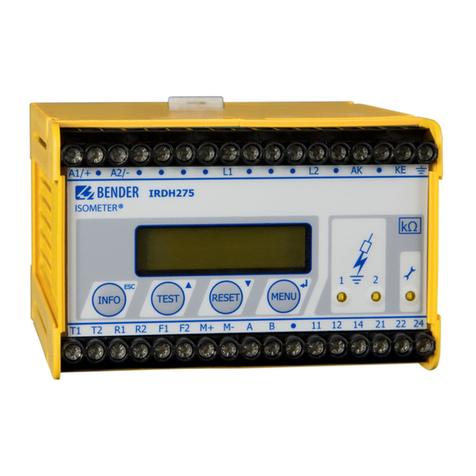
Bender
Bender A-ISOMETER IRDH275BU-6 operating manual
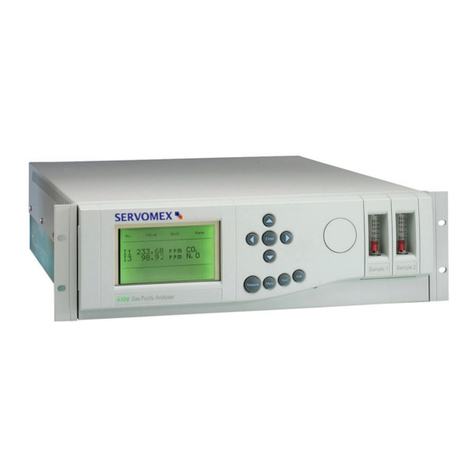
Servomex
Servomex SERVOPRO 4000 Series installation manual
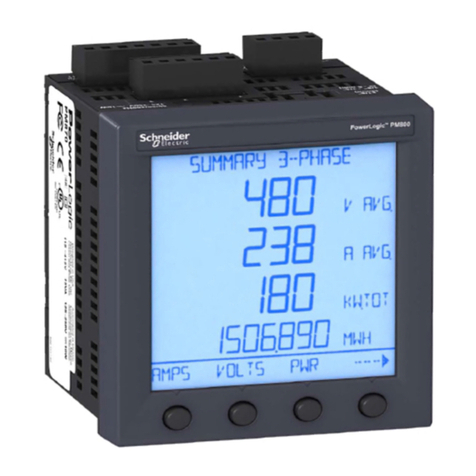
PowerLogic
PowerLogic PM820 installation manual

Pennsylvania
Pennsylvania 7600E Instructions/service manual
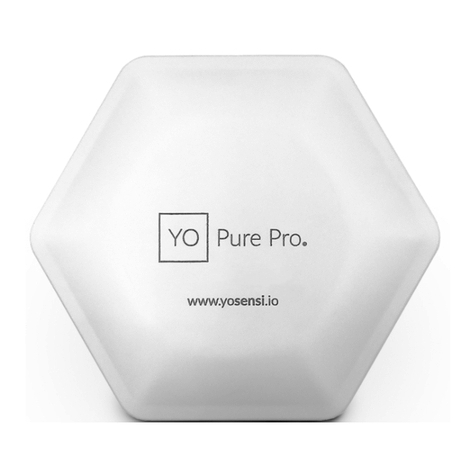
YOSensi
YOSensi YO Pure Pro Quick installation guide
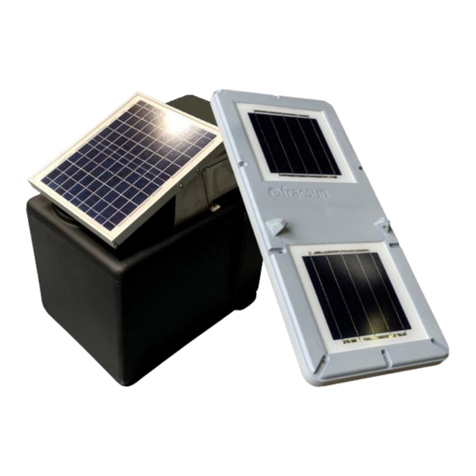
Fracsun
Fracsun CS4 installation manual
